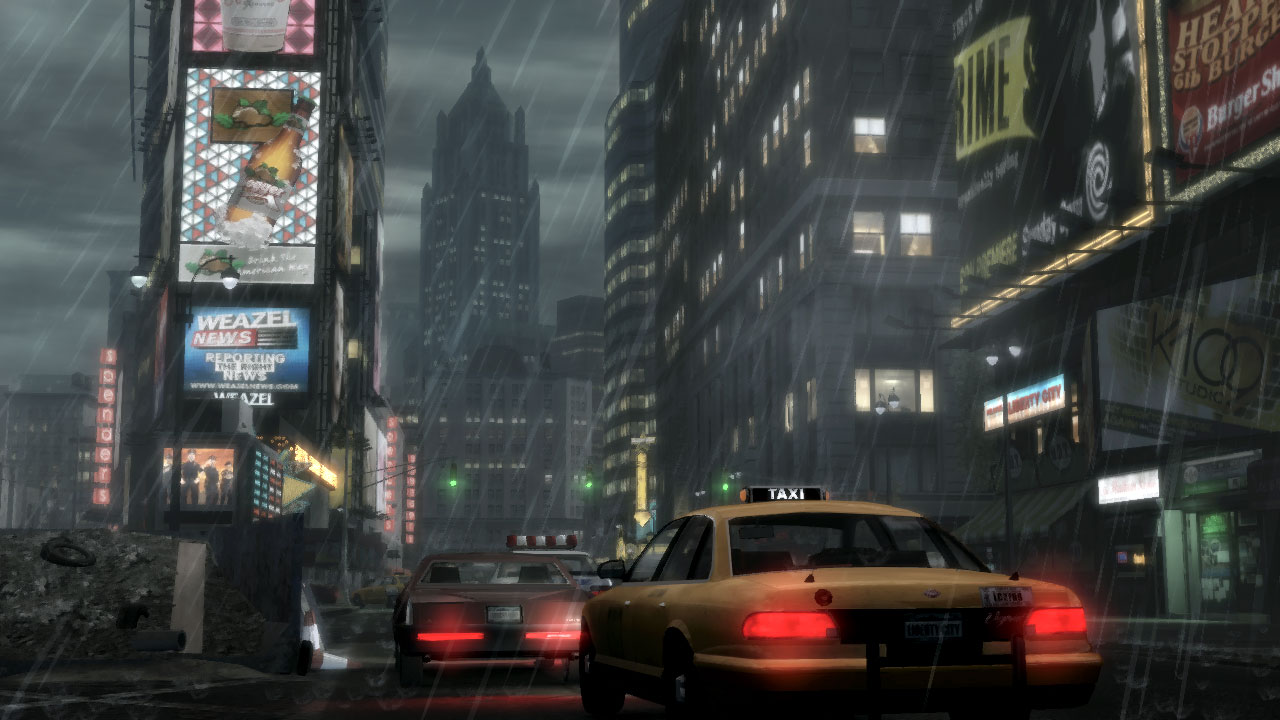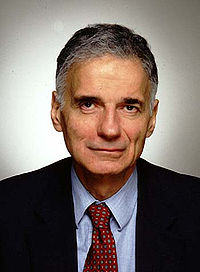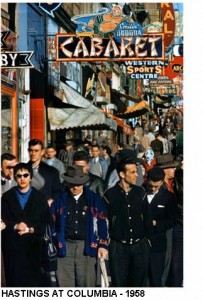Further to issues raised today about physical place and the validity of its media/fictional cartographies, I thought it would be interesting to explore a city, say New York, through its video game landscapes. We’ll play pac-man in alphabet city, fight off aliens in the Chrysler Building and drag-race down the Bowery – wandering through the figment Manhattan in its all its endless and imagined mutations.
Category Archives: Uncategorized
VPSN meeting tonight
Just caught word that the Vancouver Public Space Network’s annual planning meeting/open house is happening tonight at 7:30, at the 411 centre. Preceding the open house is a presentation by Scott Hein, the city’s Senior Urban Designer, on the idea and practice of “Implementing Urbanism”
Zamyatin’s We and The Power of Words
The formatting is wonky- it seems to me as if WordPress is conspiring with the digital gods to selectively copy+paste my elegant formatting from Microsoft Word. In any case, consider the long block quotes as extraneous material intended to refresh the reader’s memories regarding R-13’s relationship to D-503. I’ve abbreviated their names where appropriate for brevity. Page number citations are from my edition of We except where otherwise noted by author name.
“If they fail to understand that we bring them mathematically infallible happiness, it will be our duty to compel them to be happy. But before resorting to arms, we shall try the power of words.” (1)
For Zamyatin who would be exiled for his writings, the power of words in his own life was reflected most profoundly in his writing. It permeates the structure of We, giving it frantic momentum and a locus in which to pour energy in the form of the Integral. The mathematical inclination of D-503, who decides to comply with a state directive to compose poetry/propaganda for the Integral by keeping a diary, is important when considered alongside the poetical inclinations of his friend R-13. D’s lament that “the music of assonances and rhymes” (2) are unfamiliar appears to set him firmly apart from the world of poesis. From D’s perspective, his reasoning is sound. If the One State is truly what it claims to embody: “mathematically infallible happiness” (1), then a record of life in such a perfect state should only serve to reflect its Utopian characteristics. That D’s intent should diverge so wildly from the final product is indicative of the true nature of the State. This avenue of inquiry regarding the format of D’s writing begs a further question. What is the function of the state-poet, R-13, in We?
Consider some conversation that passes between D and R:
“Fortunately, the antediluvian ages of all those Shakespeares and Dostoyevskys, or whatever you call them, are gone,” – D-503 (43)
“When R-13 entered, I was perfectly calm and normal. I spoke with sincere admiration of how splendidly he had succeeded in versifying the sentence, and told him that his trochees had been the most effective instrument of all in crushing and destroying that madman.” (60)
“It was again the old R: thick, sputtering lips, spraying saliva, and a fountain of words. ‘You see’ (‘s’-a spray) ‘… that ancient legend about paradise… Why, it’s about us, about today. Yes! Just think. Those two, in paradise, were given a choice: happiness without freedom, or freedom without happiness. There was no third alternative. Those idiots chose freedom, and what came of it? Of course, for ages afterward they longed for the chains. The chains-you understand? That’s what world sorrow was about. For ages! And only we have found the way of restoring happiness… No, wait, listen further! The ancient God and we-side by side, at the same table. Yes! We have helped God ultimately to conquer the devil- for it was he who had tempted men to break the ban and get a taste of ruinous freedom, he, the evil serpent. And we, we’ve brought down our boot over his little head, and-cr-runch! Now everything is fine-we have paradise again. Again we are as innocent and simple-hearted as Adam and Eve. No more of that confusion about good and evil. Everything is simple- heavenly, childishly simple. The Benefactor, the Machine, the Cube, the Gas Bell, the Guardians- all this is good, all this is sublime, magnificent, noble elevated, crystally pure. Because it protects our unfreedom-that is, our happiness. The ancients would begin to talk and think and break their heads-ethical, unethical.. Well, then. In short, what about such a paradisiac poem, eh? And, of course, in the most serious tone… You understand? Quite something eh?’” (62)
The nod to Dostoyevsky made by Zamyatin is not a careless one. Zamyatin is, here, consciously juxtaposing “Dostoyevsky’s eternal opposition of freedom and happiness” (Parrinder) to that of his own union of freedom and happiness- a fundamentally anti-socialist one. That D dismisses the author Dostoyevsky as an anachronism in their time while R speaks joyously of the composition of an epic poem that will espouse Dostoyevsky’s opposition is significant. In this, I find R’s role within We: to function as the ‘truth-creating’ mouthpiece of the One State when reality fails. Where necessary, R will divert his talents from the collective self-aggrandizing the One State demands in order to denounce fellow poets and ‘versify’ their death sentences. For the One State whose stability so fundamentally rests on a bed of lies (that no humans live beyond the walls of the city, the true function of the Integral as a reflexive propaganda tool, that unfreedom is the true state of happiness, etc.), it is vital that the collapse between fiction and reality be complete. In other words, poetry has become law.
When we look at the attitude of D at the beginning of the novel towards R’s suggestion that he change his career from being a mathematician to a poet, the irony of D’s development over the course of the novel becomes clear:
“Certainly, certainly! By rights, my good friend, you should not be a mathematician; you ought to be a poet! Yes! Really, why not transfer to us poets, eh? How would you like that? I can arrange it in a moment, eh?” –R-13
“I have served and will continue to serve knowledge,” I frowned –D-503
“Oh, knowledge! This knowledge of yours is only cowardice. Don’t argue, it’s true. You’re simply trying to enclose infinity behind a wall, and you are terrified to glance outside the wall. Yes! Just try and take a look, and you will shut your eyes. Yes!” –R-13
“Walls are the foundation of all human…” –D-503 (41)
It is R at the start who labels the mathematics and precise rationality of D as cowardice, but it is D at the end who unflinchingly reveals the true nature of the state through his writing. Indeed, just as R accuses D of trying to enclose infinity behind a wall with his knowledge, R himself participates in the enclosing of his fellow citizens behind walls through the use of ‘state poetry’. Zamyatin, in his juxtaposition of R-13 and D-503, is taking, at once, a cautionary and optimistic stance towards the force of writing. It is when the power of words is harnessed and domesticated solely for the state that societies such as the One State are allowed to arise. Only those who set out to write to uphold the fundamental opposition between fiction and truth can reverse the damage done. In this way, one can conceive of Zamyatin’s We as a metanovel. D, in uncovering the true nature of the One State through his writing, is embedded within and references Zamyatin’s own literary struggles against the new socialist state of his own time.
Consider what Zamyatin is doing by weaving this dialogue regarding the utility of poetry in the interest of the state into his own epic We. In this gesture of defiance towards the Communist government and their demands of their writers/propagandists, he refuses to submit his craft to the will of others. In doing so, he is exiled permanently. Just as D must inevitably and logically resist the One State by following the seemingly innocuous order he receives to glorify it if he writes literally and not figuratively about it, so too must Zamyatin inevitably resist by writing figuratively and not literally in the mode of propaganda. As Lev Lunts, one of the Serapion Brethren and writer friend of Zamyatin put it, “We reject Utilitarianism. We do not write for the sake of propaganda. Art is as real as life itself, and, as life itself, it has no goal or meaning, it exists because it must exist… Our one demand is that the writer’s voice must never be false.” (Ginsburg ix) For both D and Zamyatin, truth and fiction remain in flux relative to the societies in which they operate. What, however, remains a constant is the validity of their voices as writers. They are never false.
Works Cited
Ginsburg, Mirra. “Introduction.” Yevgeny, Zamyatin. We. New York: Avon Books, 1987. v-xx.
Parrinder, Patrick. “Patrick Parrinder-Imagining the Future: Zamyatin and Wells.” Science Fiction Studies. 22nd February 2009 <http://www.depauw.edu/SFs/backissues/1/parrinder1art.htm>.
Zamyatin, Yevgeny. We. Trans. Mirra Ginsburg. New York: Avon Books, 1987.
Critical Response#1: The Garden of WE-den
Hello cyberspace. I decided to take a traditional route with this assignment, and formulated a close reading of I-330 from Zamyatin’s WE. Since I’m currently reading Milton’s Paradise Lost in another class, I was inspired by the tale of Adam and Eve in the Garden of Eden. Here goes!
Disclaimer 1: The Zilboorg translation of We that I will be quoting from is quite different from other versions of the text; for example, my book uses “fancy” where others use “imagination”.
Disclaimer 2: I will be referring to the Adam and Eve story as common knowledge; hopefully you are all familiar with its basic characters and events.
“They, fools that they were, chose freedom” (59): I-330 as the Satanic Eve
It is difficult to read Eugene Zamyatin’s We without being reminded of the biblical story of Adam and Eve. The forest “beyond the Green Wall” (149) can be likened to Paradise itself, and the Well-Doer’s “surgical removal of fancy” (77) is reminiscent of God’s desire to keep human nature separate from the “Knowledge of Good and Evil”. In addition, the subversive Mephi who “tempt” susceptible Numbers away from the doctrine of the United State play a Satanic role; of course, the name “Mephi” refers to Mephistopheles, Faust’s version of the devil. Overall, We presents readers with an inverted Adam and Eve tale, since we have characters being tempted into Eden, and not away from it.
Given that a paper much longer than this one could be written on this subject, I’m choosing to focus solely on the way that the character of I-330 complicates the “Adam and Eve” metaphor. Although she is undoubtedly a reincarnation of Eve, I-330 also embodies aspects of Satan; what does this do to a proposed reading of We as a topsy-turvy version of humankind’s fall from Paradise? First, I-330 represents Eve in that she is D-503’s true counterpart (despite his “relationship” with O-90). The first moment we meet her is when D-503 notes, “A laugh, as if an echo of mine, reached my ear” (7; emphasis added); just as Eve is to Adam, I-330 is D-503’s equal and he quickly falls in love with her. Here, the key word is falls; it could be argued that D-503’s infatuation with I-330, which made him realize that “love and jealousy do exist, and not only in the idiotic books of the ancients” (61), is the impetus for his “fall” from the faux-paradise of the One State into the Eden-like world beyond the Green Wall. Just as Eve gives Adam the forbidden fruit, I-330 gives D-503 a taste of forbidden alcohol (54); a few pages later, D-503 admits, “For the first time in my life I see clearly” (57).
Although she embodies an Eve-like role within the text, I-330 similarly represents Satan. Aside from the obvious example of her role in the Mephi, she also expresses the desire to make “all that was certain come to an end” (137), just as Satan desired to undermine God’s “project” on Earth by tempting Adam and Eve to sin. In addition, we can possibly view I-330’s connection to the color yellow as allying her with the devil. In the excellent essay “Zamjatin’s Modernist Palette: Colors and Their Function in We”, Sona S. Hoisington and Lynn Imbery survey and consolidate the various studies that have analyzed Zamyatin’s use of color; as they see it, yellow “symbolizes vitality, the presence of the life force associated with the sun in the heroine I-330, in the world of the past, and in the world beyond the Wall” (163). Interestingly, according to Wikipedia, “During the Middle Ages, both green and yellow were used to symbolize the devil”; just as the “ancients” of our present culture associated yellow with the devil, D-503 associates I-330 with yellow objects in the “Ancient House”, as well as with the yellow pollen that drifts over the Green Wall.
Therefore, it is possible to read We as an Adam and Eve story where I-330/Satan distributes the “Knowledge” that disrupts the One State/Paradise, while I-330/Eve also tempts D-503/Adam to follow her into a new life. Although the garden is re-entered in We and not abandoned, the fact that I-330 embodies aspects of both Satan and Eve leads to the death of D-503’s chance at living in the “real” Utopia: when D-503 discovers that he was recruited by I-330 for reasons other than love, he gives up his humanity to be a Number forever. Unable to reconcile the Satan within his Eve, D-503 chooses the false Paradise over true Eden.
Works Cited
Hoisington, Sona S. and Lynn Imbery. “Zamjatin’s Modernist Palette: Colors and Their Function in We.” The Slavic and East European Journal, 36.2 (1992): pp. 159-171.
Zamyatin, Eugene. We. Trans. Gregory Zilboorg. Toronto: Clarke Irwin, 1959.
Gibson’s Cyberspace Visualized in JM

If you guys are having some trouble visualizing Case navigating cyberspace in Neuromancer, have a look at this clip from an old movie based on Gibson’s short story ‘Johnny Mnemonic’. There’s actually continuity between the two novels, (they’re all set within his Sprawl universe) Johnny is Molly’s old love interest.
The Transliterated Pudenda of Ralph Nader
In the spirit of, well, in the spirit of many things (the pornography of pornography (as I think Hung Te said it) that is The Atrocity Exhibition, Valentine’s Day, chocolate genitalia, and last class’ discussion on vagina power vs. phallic ridicule), I present to you:
An illuminating article on the pudenda entitled \”The Pudenda Agenda\”
Enjoy!
City of Tomorrow …Yesterday
Sunday film screening: Crash
Hyperreality Television
Alright y’all, if I promise to forthcome with a post of well cited academic thoroughness, will you accept this youtube video in lieu in the present? Besides the ROFL factor, it does do an excellent job of presenting every aspect of the debate, and frankly, despite the hyperbolic satire, I feel this is only inches away from our current media environment. Has anyone watched CNN lately? Yikes! DISCLAIMER: NSFW
Prefatory theory: “There is no real and no imaginary except at a certain distance. What happens when this distance, even the one separating the real from the imaginary, begins to disappear and to be absorbed by the model alone? Currently, from one order of simulacra to the next, we are witnessing the reduction and absorption of this distance, of this separation which permits a space for ideal or critical projection.” (Baudrillard)
I believe what we have here is these ideal and critical spaces collapsing into one. And they said irony was dead.
***ADDENDUM: Sorry to smut up the front page like this, Youtube had to select the raunchiest frame from an otherwise visually tame piece.

Planes intersect:
“On one level, the world of public events, Cape Kennedy and Viet Nam mimetized on billboards. On another level, the immediate personal environment, the volumes of space enclosed by my opposed hands, the geometry of my own postures, the time-values contained in this room, the motion-space of highways, staircases, the angle between these walls. On a third level, the inner world of the psyche. Where these planes intersect, images are born. With these co-ordinates some kind of valid reality begins to clarify itself” – J.G. Ballard
I brought this passage up today as indicative of a prominent and overarching theme in The Atrocity Exhibition, and although it had no particular questions attached, It might be useful in grounding monday’s discussion on the book’s negotiation of interiority / exteriority, as well as issues of hyperreality raised today.
(re-)read Baudrillard’s “Science Fiction and Simulacra” for Monday – in addition to its ties with The Atrocity Exhibition, we’ll be revisiting ideas of simulation and hyperreality later on; Baudrillard’s article will be working as our common point of reference.
Map-territory relations: the formal title for the concepts introduced at the beginning of class, encompassing both Baudrillard’s and Borges’ notions of what might be called the irreducibility of space: read “On Exactitude in Science”
and to see the same ideas drawn another way, take a minute to navigate a map is not the map
also, CNN’s “the Moment” – in terms of layered images, media, consolodated by a single event
I thought I’d post the question on trauma/temporality as well, derived from a class I had earlier on terrorism and writing:
In a critical analysis entitled “Trauma’s Time”, Aimee L. Pozorski (drawing on the fiction of R. Clifton Spargo) describes the time of trauma as “a time that is paradoxically not the moment itself, but ‘what comes after,’ what will always come after, the ‘afterwardsness or belatedness of trauma itself.”
With this relationship of time/trauma in mind, what elements of futurity (post-trauma?) resonate within Ballard’s text – where is it situating itself temporally in relation to the trauma of its historical moment, and to what effect?
And on a less related note, I’ll be in Irving K on the third floor Thursday between 1 and 4pm, working on a proposal for the film project – if you’re around and are interested, drop by!








